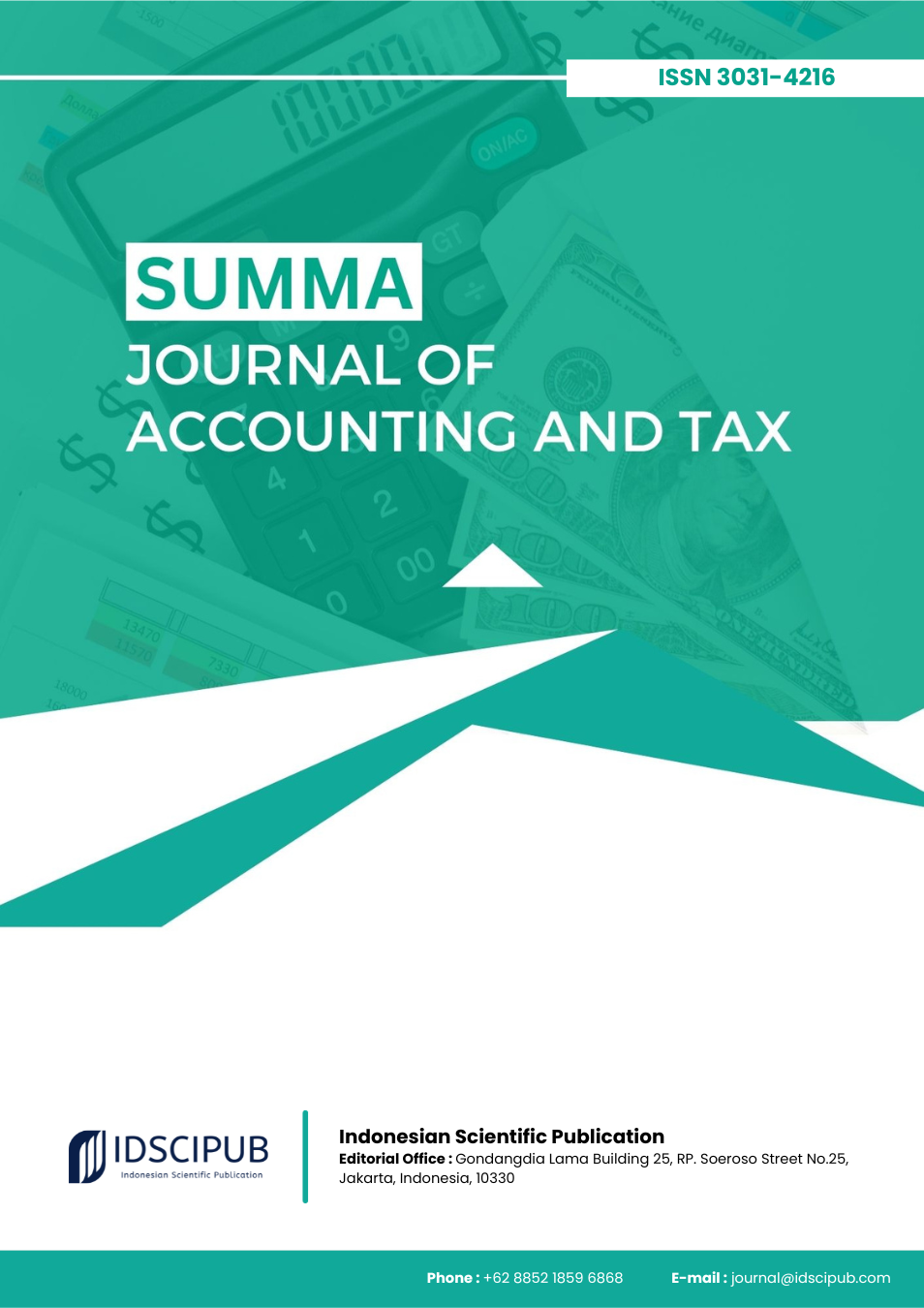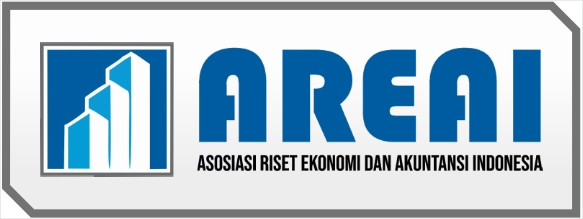Implementing Pillar Two: Challenges and Opportunities in the Global Minimum Tax Framework
DOI:
https://doi.org/10.61978/summa.v2i4.982Keywords:
Global Minimum Tax, Pillar Two, Base Erosion and Profit Shifting, International Taxation, Tax Competition, Multinational Enterprises, Tax ReformAbstract
This study provides a narrative review of the Global Minimum Tax (GMT) under the OECD/G20 Pillar Two framework, assessing its effectiveness in reducing corporate tax avoidance and addressing harmful tax competition. The review draws on peer-reviewed literature collected through Scopus and Web of Science, using targeted keywords such as Global Minimum Tax, Pillar Two, Base Erosion and Profit Shifting, and international taxation. Inclusion criteria focused on studies examining policy impacts, compliance outcomes, and comparative evidence across jurisdictions. Results indicate that the GMT has improved compliance and tax revenue in advanced economies with robust institutions, where an average increase of 8% in tax revenue was reported after implementation. However, in developing countries, weak administrative capacity and reliance on tax-based investment strategies hinder effective adoption, raising concerns about deepening global inequalities. The discussion emphasizes systemic factors—including institutional infrastructure, policy divergence, and socio-economic conditions—that mediate implementation outcomes. It also highlights the importance of international cooperation, coordinated regional directives, and policy innovations that align fiscal measures with sustainable development objectives. Limitations in the existing literature, particularly reliance on model-based projections and insufficient empirical evidence from developing regions, point to the need for future research using mixed methods and longitudinal approaches. The findings underscore that while the GMT represents a landmark step in international taxation, its success depends on enhancing administrative capacity, promoting policy harmonization, and embedding equity into global tax governance.
References
Apostolidou, E. (2024). Environmental policies and tax incentives in the pillar two era: a comparison of the EU and US approaches. Eur. Taxn., 64(11). https://doi.org/10.59403/1vdehjj DOI: https://doi.org/10.59403/1vdehjj
Botha, C., Ramfol, R., & Swart, O. (2023). The impact of multilateral and unilateral measures on profit-shifting from South Africa to Mauritius. Intertax, 51(3), 232-249. https://doi.org/10.54648/taxi2023005 DOI: https://doi.org/10.54648/TAXI2023005
Cherepovitsyna, A., Kuznetsova, E., Popov, A., & Skobelev, D. (2024). Carbon capture and utilization projects run by oil and gas companies: a case study from Russia. Sustainability, 16(14), 6221. https://doi.org/10.3390/su16146221 DOI: https://doi.org/10.3390/su16146221
Devereux, M., & Vella, J. (2023). The impact of the global minimum tax on tax competition. World Tax J., 15(3). https://doi.org/10.59403/126a4mh DOI: https://doi.org/10.59403/126a4mh
Garbarino, C. (2020). How countervailing measures could be used to limit strategic tax competition: an international overview. Intertax, 48(4), 416-431. https://doi.org/10.54648/taxi2020037 DOI: https://doi.org/10.54648/TAXI2020037
Garbarino, C. (2022). A critical evaluation of the international impact of the global minimum tax. Intl. Tax Stud., 5(6). https://doi.org/10.59403/1pm17j4 DOI: https://doi.org/10.59403/1pm17j4
Giuliano, I., & Ceresi, L. (2024). Implementation of the global minimum tax in Italy and EU directive proposals: does this approach effectively pave the way for the establishment of a more sustainable tax system? Eur. Taxn., 64(4). https://doi.org/10.59403/2wefm28 DOI: https://doi.org/10.59403/2wefm28
Hsu, V., Xiao, W., & Xu, J. (2019). The impact of tax and transfer pricing on a multinational firm's strategic decision of selling to a rival. Production and Operations Management, 28(9), 2279-2290. https://doi.org/10.1111/poms.13050 DOI: https://doi.org/10.1111/poms.13050
Kuźniacki, B. (2024). The compatibility of the substance over form doctrine with tax and investment treaties: a case study of Lone Star v the Republic of Korea. ICSID Review - Foreign Investment Law Journal, 39(1), 139-170. https://doi.org/10.1093/icsidreview/siad035 DOI: https://doi.org/10.1093/icsidreview/siad035
Liang, Y. (2024). The impact of the global minimum tax reform on China and its countermeasures. Economics: The Open-Access, Open-Assessment E-Journal, 18(1). https://doi.org/10.1515/econ-2022-0104 DOI: https://doi.org/10.1515/econ-2022-0104
Liotti, B. (2024). The subject-to-tax rule under Pillar Two. World Tax J., 16(1). https://doi.org/10.59403/qqp03f
Perry, V. (2023). Pillar 2, tax competition, and low income Sub-Saharan African countries. Intertax, 51(2), 105-117. https://doi.org/10.54648/taxi2023004 DOI: https://doi.org/10.54648/TAXI2023004
Perry, V. (2023). Pillar 2: tax competition in low‐income countries and substance‐based income exclusion. Fiscal Studies, 44(1), 23-36. https://doi.org/10.1111/1475-5890.12318 DOI: https://doi.org/10.1111/1475-5890.12318
Zeng, Z., Cook, A., & Eijk, Y. (2023). What measures are needed to achieve a tobacco endgame target? A Singapore-based simulation study. Tobacco Control, 33(6), 745-751. https://doi.org/10.1136/tc-2022-057856 DOI: https://doi.org/10.1136/tc-2022-057856
Avi-Yonah, R., & Kir, A. (2024). Building the Gateway: Why the Two Pillars Need Each Other. Intertax, 52(10), 591–601. https://doi.org/10.54648/TAXI2024070 DOI: https://doi.org/10.54648/TAXI2024070
Brown, C., & Whitsitt, E. (2023). Implementing Pillar Two: Potential Conflicts with Investment Treaties. Canadian Tax Journal, 71(1), 189–207. https://doi.org/10.32721/ctj.2023.71.1.sym.brown DOI: https://doi.org/10.32721/ctj.2023.71.1.sym.brown
Chand, V., Turina, A., & Romanovska, K. (2022). Tax Treaty Obstacles in Implementing the Pillar Two Global Minimum Tax Rules and a Possible Solution for Eliminating the Various Challenges. World Tax Journal, 14(1), 3–50. https://doi.org/10.59403/33wxjhc DOI: https://doi.org/10.59403/33wxjhc
Dietrich, M., & Golden, C. (2022). Consistency versus “Gold Plating”: The EU Approach to Implementing the OECD Pillar Two. Bulletin for International Taxation, 76(4), 183–196. https://doi.org/10.59403/30f9dy5 DOI: https://doi.org/10.59403/30f9dy5
Dourado, A. P. (2022). Is There A Need for A Directive on Pillar Two? Intertax, 50(6–7), 521–526. https://www.scopus.com/inward/record.uri?eid=2-s2.0-85131745825&partnerID=40&md5=78372a9b5d2634bb74d1bab3ce6b654b DOI: https://doi.org/10.54648/TAXI2022056
Liotti, B. F. (2024). The Subject-to-Tax Rule under Pillar Two. World Tax Journal, 16(1), 103–128. https://doi.org/10.59403/qqp03f DOI: https://doi.org/10.59403/qqp03f







